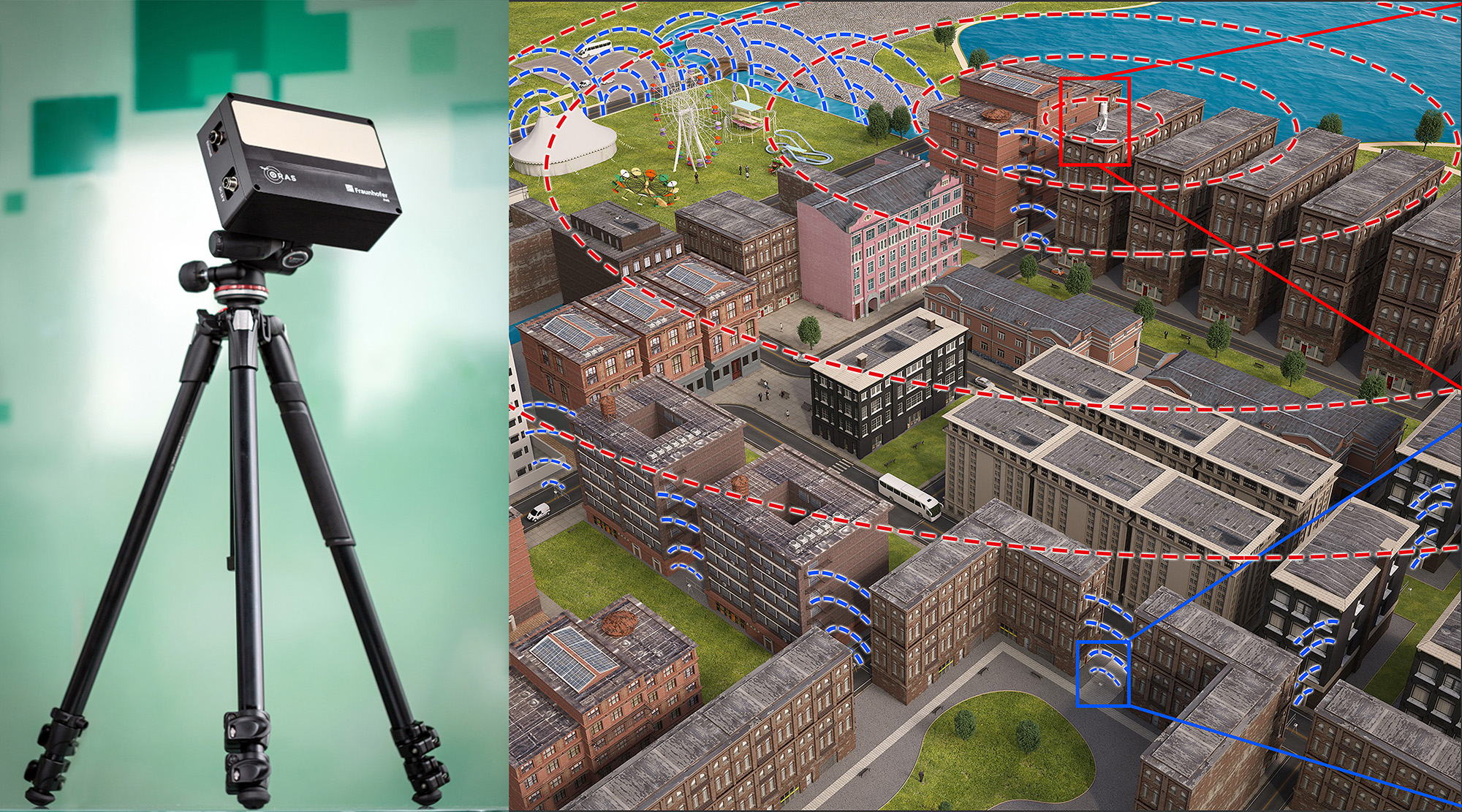Political demonstrations? Sport Events? Detecting drones...
When a sports event is held in a stadium, you not only have to ensure the safety of athletes and spectators, but also prevent the event from being misused for political statements – for instance with a drone flying circles through the stadium with a banner. A compact, user-friendly Fraunhofer FHR radar system reliably detects the smallest of drones.
Nowadays, even amateurs can easily operate small drones. The small flying objects pose challenges to security forces and the police – as they can be used to disturb political events or make statements at sports events by pulling banners or flags. Therefore, a number of partners have come together in the ORAS project, with Fraunhofer FHR being one of them. The goal is to develop a system that reliably detects mini drones in urban environments while being easy to operate. The German Federal Office of Criminal Investigation BKA and the Baden-Wuerttemberg Police with the PTLS Pol headquarters for technology, logistics, and service are on board as associated partners and possible end users.
All-round View with the »Fence Radar«
In this respect, Fraunhofer FHR is focusing on radar – more specifically on sensors placed on the ground looking upwards, for example to monitor urban canyons. It is also possible to use the radar systems to set up a type of fence. For this purpose the sensors will have to be positioned about 70 meters apart from each other. Another partner will complement this »fence radar« with a dome radar that is positioned at a higher level – for instance on a roof – keeping an eye on the sky. Since this radar is not able to look into urban canyons, the two systems complement each other perfectly. The distinctive feature of Fraunhofer's system is mainly its compact size – no larger than a small shoebox, mounted on a simple tripod – and its easy operation. In addition, the system uses a frequency range close to 60 gigahertz, which recently became license-free for the used class. The system measures both the drone’s distance from the system as well as the angle, so that a simple movement trajectory can be calculated from this data.
The radar sensor was successfully tested under real-life conditions in a measuring campaign in 2019. This was done in the Training Center »Retten und Helfen« in Moosbach, a closed down barracks with different buildings. The partners will now work on further fine tunings, and with the final demonstration set for the summer of 2020 in Moosbach. The system can also be used for other questions involving threats posed by mini drones. For instance to secure corporate development departments – when a drone flies onto company premises.
